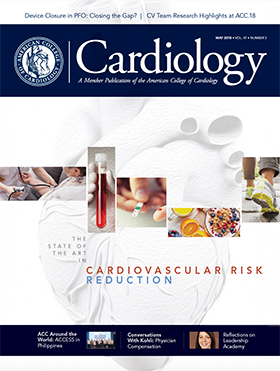Conversations With Kohli | Are Doctors Smarter than a Hamster?

The hamster wheel fascinates me! First used in 1949, it was a tool designed to give hamsters confined to small spaces exercise and stimulation. Over time, however, insights began to emerge into hamster interaction with the wheel due to behavioral patterns. For example, did you know that hamsters continue to run on the wheel, even when they are given other sources of stimulation (such as tunnel exits from their cages or toys)? And, did you know that hamsters will run on the wheel incessantly, even to their own detriment (foot lesions or cuts on their paw pads).
Several theories have emerged about the physiologic reasons for this type of behavior, including explanations such as endorphin release (the “runners high” we are all familiar with) or repetitive, habitual behaviors, which are hard to break. But I am finding myself increasingly drawing parallels between hamsters on a wheel and physicians in modern clinical practice.
Now, we all know the RVU (relative value unit) or RWU (relative work unit) is the bane of every physician’s existence. It used to be only the private practice physician who could constantly walk about consumed in a cloud of medical billing codes (99204, 99214, 99223, etc), worrying about their RVUs. Recently, however, many academic centers have also transitioned to tracking productivity as a way to increase revenues and maximize physician utilization — after all, it just makes good sense for any business. Enter the hamster wheel.
The purpose of this type of tracking was originally extremely well intentioned (to follow trends, ensure accountability and clinical efficiency). However, over time, this RVU tracking and constant comparison of RVUs among physicians has led to the physician-hamsters running faster and faster on the wheel, sometimes to their own detriment! This results in not only an increased risk for inappropriate testing and procedures, but is also a definite recipe for rapid physician burnout.
But the flip side of the coin is equally as daunting. Without having any form of productivity tracking (i.e., a completely salaried model), physicians quickly become dis-incentivized to maintain minimum levels of productivity and may even underutilize diagnostic testing and treatment. Studies have shown that salaried doctors consistently produce fewer RVUs than productivity-based physicians and it is not clear that the care they deliver or their patient’s outcomes are any better.
And then there is the issue of how we “account for” and “track” all the other things doctors do that aren’t captured with simple RVUs. These include things such as spending an extra 10 minutes with a scared patient, attending a quality improvement meeting after a long day of work, signing echo reports on time or reading journal articles late into the night to stay current. In academic centers (and in private practices that participate in clinical research), dedicated time for research often has to be “bought” with external grants and it is not weighted equally to clinical time in the RVU metric when calculating physician compensation.
So, how does one solve this problem and what is the best way to reward and to incentivize physicians? Many groups and hospital systems are now adopting a “hybrid” compensation model, where a minimum base salary is guaranteed with a productivity bonus to ensure that physicians remain motivated to work to their fullest capacity without creating a situation where there is an expectation for infinite RVU generation. Additionally, there are often “citizenship bonuses” to capture those intangibles that we as physicians contribute to our communities and our patients. The impact of such models on clinical behavior remains to be seen, but for now this appears to be the most feasible solution.
I think back to my last days of fellowship training when I was looking for a job. I remember shying away completely from RVU-based jobs, as I worried about misaligned incentives and early burnout in these settings. After a few years in practice, I am now more poised to objectively assess the advantages and disadvantages of both RVU and salary-based compensation structures. One thing clinical practice has taught me, however, is the ultimate value of learning to accurately capture the work we do as physicians regardless of practice setting, a skill that is a lot harder to learn than it sounds! I sometimes look back on my training and wish there had been an elective sometime during residency or fellowship called “medical billing” — so rather than running faster and faster on the hamster wheel we could be running smarter.

Payal Kohli, MD, FACC, practices at the Heart Institute of Colorado in Denver, where she treats a variety of cardiovascular diseases. She is also the lead physician of the Women’s Heart Center.
What do you think is the best compensation model for physicians? Do salary-based structures allow time for “better” patient care and prevent physician burnout? Or, do you think physicians who are motivated to work harder through productivity-based models are delivering better care by being more efficient? Should we incorporate medical billing into medical school curricula? Share your thoughts on Twitter using #CardiologyMag and #ConvosWithKohli. Tag @ACCinTouch.
Keywords: ACC Publications, Cardiology Magazine, Motivation, Fellowships and Scholarships, Internship and Residency, Endorphins, Quality Improvement, Burnout, Professional, Efficiency, Salaries and Fringe Benefits, Learning, Physicians, Private Practice, Social Responsibility
< Back to Listings

